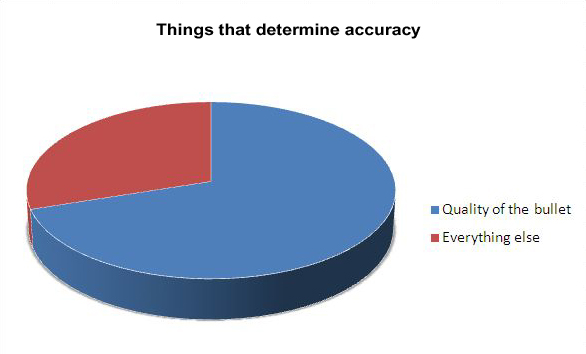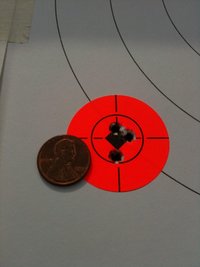I know, I know "no one reloads" .22LR, it's a cheap bulk ammo ....
1. I saw a case of some high match grade .22LR ammo for asking price of $75 for a 100 at the last Marlborough show. I overheard $50 for a box of match grade, several times. No way you can claim that it's cheap. $75/100 that's centerfire prices, easy.
2. "No one does it" - I went on major googling spree and found a few threads here and there, different places, different times, most are very old about people asking the same thing and some instances people actually doing it - sifting through a bulk box and picking some by weight or literally taking bullets of and re-seating them. Not too many details though.
3. "Find the best ammo for your gun" - I tried, and I'm not too happy with consistency. Looking here http://www.steelchickens.com/forums/viewtopic.php?f=4&t=1983&start=0 this guy sites 2 grain variation of powder charge for CCI ammo. I'm not sure how that translates into ballistics, but with CCI reputation I can imagine that variation being much greater for worse brands
for plinking, shooting short distances or off-hand, I don't see using a decent brand of brick ammo being a big deal. But for say benchrest competition, shooting 100 yards, using an expensive gun, needing 10 good rounds, I just don't see why someone would not reload or in some way guarantees the load of his ammo.
... so I feel like some people may do it (reload .22LR) but would not admit it, it's almost like a taboo. Do you know of your "friends" who do that? What are some issues? I'm skittish handling "primed" rimfire shells, I don't know how much pressure they would allow, where unlike the centerfire brass, that has clear safe zones. The biggest issue is to have the round go off from some accidental deformation. What else am I missing?
1. I saw a case of some high match grade .22LR ammo for asking price of $75 for a 100 at the last Marlborough show. I overheard $50 for a box of match grade, several times. No way you can claim that it's cheap. $75/100 that's centerfire prices, easy.
2. "No one does it" - I went on major googling spree and found a few threads here and there, different places, different times, most are very old about people asking the same thing and some instances people actually doing it - sifting through a bulk box and picking some by weight or literally taking bullets of and re-seating them. Not too many details though.
3. "Find the best ammo for your gun" - I tried, and I'm not too happy with consistency. Looking here http://www.steelchickens.com/forums/viewtopic.php?f=4&t=1983&start=0 this guy sites 2 grain variation of powder charge for CCI ammo. I'm not sure how that translates into ballistics, but with CCI reputation I can imagine that variation being much greater for worse brands
for plinking, shooting short distances or off-hand, I don't see using a decent brand of brick ammo being a big deal. But for say benchrest competition, shooting 100 yards, using an expensive gun, needing 10 good rounds, I just don't see why someone would not reload or in some way guarantees the load of his ammo.
... so I feel like some people may do it (reload .22LR) but would not admit it, it's almost like a taboo. Do you know of your "friends" who do that? What are some issues? I'm skittish handling "primed" rimfire shells, I don't know how much pressure they would allow, where unlike the centerfire brass, that has clear safe zones. The biggest issue is to have the round go off from some accidental deformation. What else am I missing?



![Smile [smile] [smile]](/xen/styles/default/xenforo/smilies.vb/001.gif)



